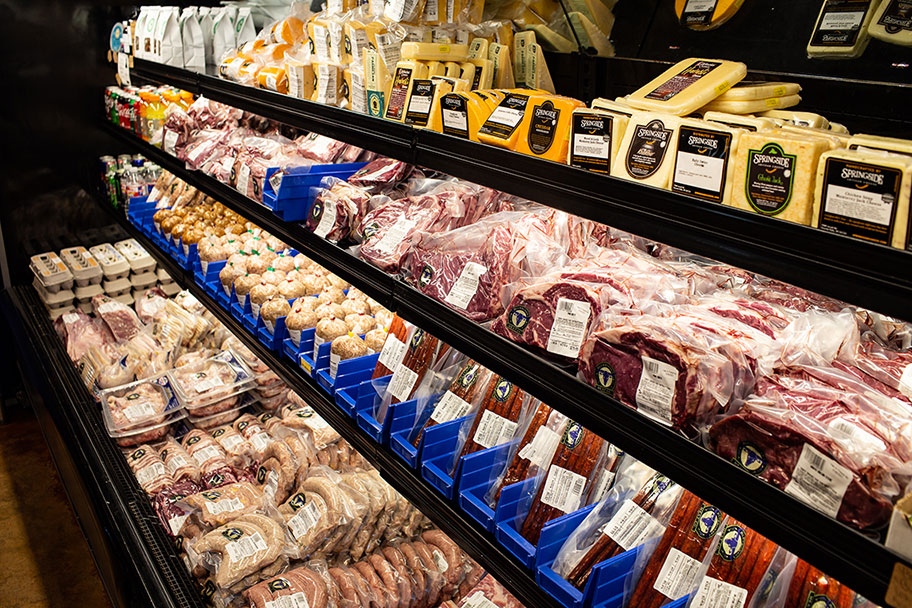Discover the Finest Option of Cuts From Local Meat Market
In a period where the origins of our food are much more substantial than ever before, discovering the finest option of cuts from your neighborhood meat market supplies a compelling narrative of top quality and integrity. These markets not just promise unrivaled quality and preference however also provide insights right into the nuances of different primal and sub-primal cuts.
Benefits of Neighborhood Meat Markets
Local meat markets provide various advantages that are becoming increasingly considerable in today's food landscape. Primarily, they provide customers with accessibility to fresher and higher-quality meat. Since the supply chain is shorter, neighborhood meat does not withstand extensive transportation times, protecting its freshness and nutritional worth. This close distance to the resource likewise enables improved traceability, supplying customers with openness concerning where and just how the meat was produced - bagley farms meat market edwardsville il.
Furthermore, neighborhood meat markets usually support lasting farming techniques. Numerous neighborhood producers engage in eco-friendly and honest farming approaches, which add to the wellness of animals and the preservation of natural deposits. By selecting to purchase from these markets, consumers can contribute in advertising sustainable agriculture and minimizing their carbon footprint.
Furthermore, local meat markets add to the financial vigor of communities. By sustaining neighborhood producers, consumers assist receive local business and foster financial development within their region. This financial assistance can lead to task development and help maintain the unique character of local communities.
Comprehending Various Meat Cuts
A basic facet of making informed buying choices at local meat markets is understanding the different cuts of meat offered. Each cut supplies special flavors, textures, and food preparation possibilities, making it necessary to recognize just how they differ. Mostly, meat is categorized into primal, sub-primal, and retail cuts. Primitive cuts are the bigger areas at first divided from the carcass, such as the loin, rib, and chuck. These are additional divided into sub-primal cuts, which ultimately damage down into retail cuts, the familiar options found at the marketplace.
As an example, from the beef primal cut, the loin, one can acquire sub-primal cuts like tenderloin, resulting in retail choices such as filet mignon. The rib primitive cut consists of sub-primal ribs, creating retail options like ribeye steaks. Comprehending these differences help in choosing cuts that line up with culinary needs and individual preferences
Furthermore, cuts vary in inflammation and fat web content, influencing their suitable cooking approaches. Harder cuts like brisket benefit from slow-moving cooking, while tender cuts like sirloin are fit for grilling. By realizing these nuances, customers can improve their cooking experiences and optimize their meat purchases.

Specialist Tips for Deciding On Meat
Choosing the optimal cut of meat needs not only knowledge of the various options offered but also a keen understanding of top quality signs that professionals make use of to make their selections. Focus should be positioned on the color of the meat. Vibrant, rich colors normally reflect quality, while plain or grayish tones may indicate aging or incorrect storage space. Next, think about marbling, the fine touches of fat within the muscle mass. A well-marbled cut typically guarantees boosted taste and inflammation, as the fat thaws throughout food preparation, enhancing the meat's appearance and taste.
One more critical aspect is the meat's structure. It needs to really feel strong yet slightly accepting the touch, showing correct muscle mass honesty. Additionally, a clean, fresh fragrance is imperative; any kind of off or sour odors suggest putridity and must be stayed clear of. Professional recommendations additionally entails taking a look at the packaging, if relevant. Vacuum-sealed or securely wrapped packages help maintain quality and prevent contamination.

Finally, recognizing the track record advice and sourcing practices of your local meat company can provide understandings right into the quality and ethical standards of the meat. Engaging with well-informed butchers can offer important suggestions customized to particular culinary requirements, ensuring an exceptional dining experience.
Ideal Seasonal Choices

Picking seasonal cuts not just ensures quality however additionally aligns with the peak top quality of different meats. Pork, generally healed and preserved in the colder months, uses a rich variety of cuts like ham and bacon throughout wintertime, when pigs are slaughtered after being plumped on fall harvests. Poultry, on the various other hand, is commonly at its finest during late spring and early summertime, when chickens have matured on a diet regimen of fresh grains and eco-friendlies.
Sustaining Lasting Practices
Embracing sustainable practices in meat manufacturing is essential for promoting ecological health and wellness and guaranteeing the long life of local ecosystems. In the context of local meat markets, sustainability involves a commitment to moral farming methods, lowering carbon footprints, and sustaining biodiversity. By focusing on these methods, producers not only improve the look here high quality of their offerings however additionally contribute positively to their communities and the earth.
Regional meat markets play a critical function in cultivating sustainable agriculture by sourcing items from farms that execute environment-friendly approaches. These might include rotational grazing, natural feed, and incorporated insect administration, which jointly decrease ecological influence and promote pet well-being. By selecting to support such markets, customers can directly influence the demand for sustainably increased meat, urging more producers to adopt these practices.
Furthermore, sustainable practices in meat production can considerably minimize the sector's ecological impact. As an example, minimizing resource usage and waste generation through innovative farming methods can bring about considerable decreases in greenhouse gas discharges. This is vital in dealing with environment adjustment and protecting natural deposits for future generations. Sustaining lasting techniques not just profits the atmosphere yet likewise aligns with a wider dedication to accountable usage and production.
Final Thought
Local meat markets offer unequaled benefits in terms of quality, freshness, and sustainability. Supporting neighborhood meat markets not only advertises sustainable farming practices link however additionally contributes to a more educated and rewarding cooking trip.